Representing and analysing mediated memory through a semantic social media web archive
1 : Digital Curation Unit, IMIS/Athena Research Centre
(DCU-ARC)
Artemidos 6 & Epidavrou GR-151 25 Maroussi -
Greece
2 : Faculty of Information, University of Toronto
(iSchool, UofT)
* : Corresponding author
140, St George street Toronto ON M5S 3G6 -
Canada
Social media networks have become an increasingly important domain for community interactions and institutional interventions regarding heritage and collective memory, with implications for contemporary identities and attitudes. In the context of CONNECTIVE Digital Memory in the Borderlands Project, we have been working to reveal how memory practices on Lithuanian Social Network sites mediated by contested heritage shape cultural identities at transnational, national and intersectional level, while, at the same time, building on digital curation approaches to archive Lithuanian social digital memory and save it from future obsolescence. A key question we encountered in the process of constructing an archived corpus of conversations on the history and difficult past of Lithuania on Facebook, Instagram and vKontakte was what are the properties of archived information objects, and their relationships, that allows them to be used as epistemic objects suitable for evidence-based scholarly research? Going beyond established approaches of actuarial web archiving of atomic digital resources to construct this corpus, and drawing from continuum recordkeeping theory, cultural semiotics and cutlural-historical activity theory, we established an approach based on an ontology of semiotic activity of heritage, memory and identity practices on social network sites, accounting for interactions between users through posts, comments and reactions on social media and the semiotic content of these heritage-related interactions, providing the schema for a digital repository which uses graph database technology to archive and provide access to (a) facsimile copies and serialised .json streams of social media conversations, construed as a Submission Information Package (using OAIS terminology), (b) knowledge graph representations of deposits, agents, threads and messages representing these social media interactions, and allowing us to ask meaningful research questions on social media interactions related to the heritage and difficult past of Lithuania, the individuals and institutions involved in such interactions, etc., construed as an Archival Information Package, and (c) export files, in .csv format, suitable for import into a qualitative data analysis application such as MaxQDA for researcher-driven qualitative coding and analysis, as well as representations of subsets of the knowledge graph suitable for Social Network Analysis, construed as a Dissemination Information Package. This process enabled a team of ten researchers participating in the project to conduct useful, digital archive-based research, on topics as diverse as the Soviet monuments war, the cultural memory of Lithuanian independence in the 1990s, post-World War II memories of resistance, the memory of the Holocaust and ethnocultures in the Lithuanian space. It also allows to revisit broader issues related to the specification and methodology of developing web archives suitable for systematic analysis of cultural materials in scholarly contexts.
In this presentation, we outline the motivation, theoretical framework, procedures established and digital representations constructed in the process of building the CONNECTIVE social media digital archive and using it in representative scholarly research activity regarding the mnemonic work of communities and institutions related to the Lithuanian difficult past and diverse cultural heritage. On this basis, we relfect on broader methodlogical and theoretical issues regarding the representation and significant properties of cultural knowledge through web archives.
In this presentation, we outline the motivation, theoretical framework, procedures established and digital representations constructed in the process of building the CONNECTIVE social media digital archive and using it in representative scholarly research activity regarding the mnemonic work of communities and institutions related to the Lithuanian difficult past and diverse cultural heritage. On this basis, we relfect on broader methodlogical and theoretical issues regarding the representation and significant properties of cultural knowledge through web archives.

 PDF version
PDF version
